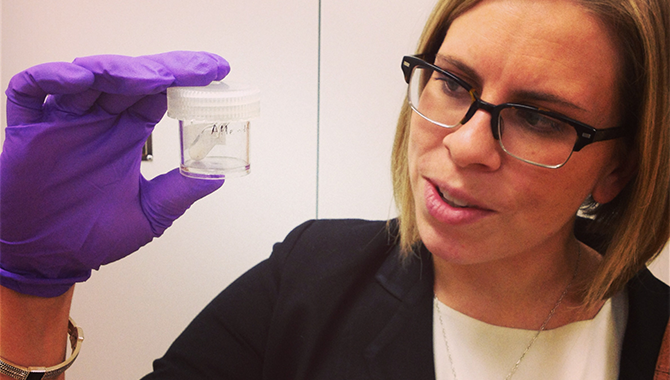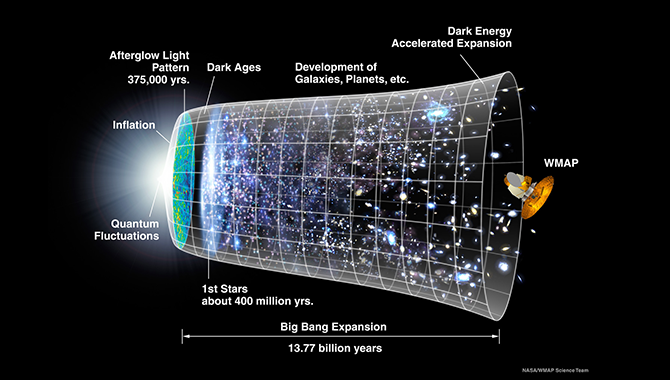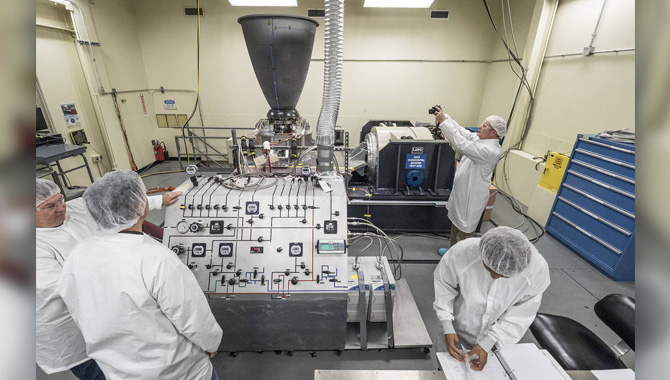
NASA’s Office of the Chief Scientist is on track to launch a science communications initiative designed to help the agency’s practitioners tell their stories.
What is it that makes the stories told by scientists such as Carl Sagan, Neil deGrasse Tyson, or Chris Hadfield particularly compelling and engaging? An initiative within NASA’s Office of the Chief Scientist seeks to address this question in a science communications course for NASA employees that will pilot this fall. APPEL News spoke with Sarah DeWitt, NASA science communication specialist and the project lead behind the course, to learn more about how the initiative will help NASA practitioners share their stories and engage a variety of audiences in NASA’s mission.
APPEL News: The science communications initiative within NASA’s Office of the Chief Scientist started in 2012. Can you tell us more about the impetus for this program?
Sarah DeWitt: I was working for the Chief Scientist at the time, and he and I were having lots of conversations about NASA’s identity in the post-Shuttle era. There were public misperceptions that NASA was closed and that the agency didn’t have anything going on after the Space Shuttle Program. There were a lot of conversations about the role of NASA’s scientists in all of this and how they might fit in. It was a bit of a transition period from astronauts being the primary face of NASA to some other people being the face of NASA and what might that look like.
These conversations brought up a long-held interest I’ve had for about a decade now in creating a more broadly available science communication training to the agency. This is something that has popped up in little pockets around NASA from time to time for different missions or organizations, but it’s never really be done at an agency-wide level, where somebody looked at it as a system across all of the different science disciplines, centers, and mission directorates. That’s where this started.
So we partnered with the Office of Human Capital Management to design a leadership development course specifically focused on science communication. We’ve spent the past year and a half assessing the need within the science community, testing out various skills training in virtual workshops, and developing the agency’s first onsite science communication training course. Course participants will work simultaneously on a personal and strategic organizational level. They’ll have dedicated work time and support from peers and coaches on a personal science communication project, as well as an opportunity to work in small cross-agency interdisciplinary teams on a group project that will have an impact on science communication at NASA.
APPEL News: Why is it important to have a course or this kind of training for science communications?
DeWitt: There are a number of reasons why science communication itself is important. First of all, it’s pretty widely recognized that standard media training is insufficient for anyone in the world today where they are expected to interface with different audiences and stakeholder groups outside of traditional media. Media is just one facet of how we communicate with the world from NASA. It’s a very specialized mode of training that doesn’t always encompass every other way that we communicate, including social media, stakeholder conversations, and even proposal writing or pitch sessions that might happen within the walls of NASA. That said, a lot of what you learn in media training can be applied [to these various situations].
The other thing is that there is a huge amount of concern in the world about the STEM pipeline having sufficient role models who are interfacing with kids, parents, teachers, and the world in a very authentic, personal way. I think NASA has set a good example of how to showcase STEM role models, but I think there’s still some work to be done, especially in the areas of diversity and multidisciplinary STEM models.
Lastly, one of the things we hear most often when the Chief Scientist and I visit NASA centers is that scientists feel disconnected from their peers at other centers, and even within their center, and they don’t always know how their research fits into the bigger picture of what NASA does. It’s hard to collaborate and share ideas in that kind of environment, so a huge focus of this training course is really just connecting individuals to each other and to the work that we do here at NASA.
APPEL News: What are some of the biggest challenges that scientists and engineers face with today’s communications landscape? Conversely, what are some of the benefits?
DeWitt: Besides feeling disconnected from peers, I think some of the challenges we face are the same challenges anybody has in the current media landscape: the 24-hour news cycle, the fast pace of information spreading (or not spreading), and the demand for instant gratification and response. There’s a lot of high demand for people and their time. That is obviously a big challenge for scientists and a lot of other professionals who have time constraints. External communications might not be their top priority, particularly in the current budget environment. A lot of people are prioritizing more and more of their time to write proposals and grants than they are communicating the results of their science to a broader audience. I would say time is the biggest challenge for science communicators in general, and that’s true of the science community inside and outside of NASA.
The biggest advantage, though, is the availability of information and access to people. Any individual walking the streets of Washington, DC, for example, right now could talk to a NASA scientist one-on-one through social media at pretty much any time, if they wanted to.
For NASA, I think the advantage is that we can tell our own story, in our own way, and on our own schedule without having to go through the former traditional media process: pitch an idea, write a press release, hope that a reporter picks it up and then writes a story about it in some major newspaper. You don’t need to do that anymore. You can write your own story. You can blog about it, tweet about it, and it will get heard.
APPEL News: However, there are guidelines and best practices for how to do that as a government employee, correct?
DeWitt: Absolutely. With opportunity comes responsibility. That’s why we’re designing our training course to work on both a personal and an organizational level. Participants will leave the course and be expected to set an example for other employees. They’ll also have an opportunity to influence the way the agency communicates internally and externally through their group projects. That’s a big responsibility!
In the case of social media, you have to be very responsible about how you use these tools. I feel that NASA is very supportive of its employees using social media to share our discoveries with the world, and we have a responsibility to our employees to provide clear and strong guidance on how to use those tools in a responsible way. Our social media team has demonstrated very good leadership in that area, in my opinion.
APPEL News: Who among NASA scientists and engineers do you think are particularly adept at communications?
DeWitt: I am very lucky to be surrounded by a couple of really good communicators in my office. I think Ellen Stofan, NASA Chief Scientist, is one of the best communicators we have right now at the agency for a number of reasons, but primarily because she knows how to speak with a lot of clarity without dumbing things down. She’s very attuned to her audience. I’ve seen her walk into situations where she was expecting one audience and a totally different one showed up. One time, we thought she was going to speak to a group of adults and then we found out it was a class of sixth graders. She completely changed the plan just to reach these kids and it worked out really well.
Another person in our office is Amber Straughn, who is an astrophysicist at Goddard on detail to Headquarters, and she’s incredibly talented at communicating. I’ve seen her host a live event on NASA TV without a script and she didn’t miss a beat. It’s very natural for her and she shows a lot of energy and passion for her work.
A lot of folks are big fans of Bill Gerstenmaier, as well. He’s a great example of somebody who’s not only good at communicating with the public and stakeholder audiences, but also internally. He has a really good way of just being very straightforward, thorough, and trustworthy.
A couple of people who are superstars on TV [include] Tom Wagner, who is here at Headquarters in the Earth Science Division, and Piers Sellers at Goddard. They’re both very skilled on TV. Michelle Thaller, who is also at Goddard, is another good example. She’s probably done more TV than anyone at NASA!
APPEL News: You’ve mentioned in previous presentations that there are multiple approaches for teaching science communications. Can you tell us a bit more about that and describe a few of them?
DeWitt: There are a couple of different layers to that. Number one is science communication is not one thing, and every science communicator is going to have their preferences on what they want to spend their time doing. Somebody might be interested in social media, while another person might be really focused on selling a new mission idea within the walls of NASA. Those are two different goals. So you want to be able to tailor the training to people’s interests and also their skills and abilities. Some people are just not ready for live television, whereas others are might think something is too beginner-level. When talking about this course, I often have to remind people that communication is not just about public outreach. NASA scientists communicate about their research every day, and it’s a big part of their professional life.
The other part to consider is how people learn, which is not unique to science communication. You want to provide a variety of learning styles. One way might be by observing others. One might be through experience and experimentation, trying different things. Others learn by thinking about it and reading articles about science communication, and soaking it in that way. So we are building in a lot of different layers there.
Then in terms of what has been offered broadly in the world of science communication, there’s a lot of variety out there. There are a lot of programs that are very focused on creating a message and distilling a message. Others are very focused on giving short public presentations and being judged on those in front of their peers or the public. Others are more experimental and use improvisation from the theater school to draw out the listener in the communicator and to really focus all of their attention and energy on the audience rather than on what is in their head and what they know. We’re looking at a combination of those approaches for the course.
APPEL News: The early stage of this initiative is focused on scientists in particular, however you are looking to grow the community to include other NASA personnel such as engineers and technologists. Do you think the course or the teaching approach will change when you introduce it to these new communities?
DeWitt: That is something I am interested to find out and I don’t know the answer yet. I believe two opposing ideas at the same time. I strongly believe that communication is communication; it’s fundamental and everybody does it every day of their life. We’ve been doing it since we were born and there’s nothing special about science communication in particular.
At the same time, I do believe that there are certain challenges that are unique to the science community, how science shows up in the world, and how science and society interact. So I think it’s very important to acknowledge both of those things and embrace the fact that they can both be true at the same time.
I think there probably will be some similarities and some differences when we introduce this to people outside of the science profession. One of the things that we’ve been aiming for is to have this whole effort be community-driven. What I’d like to see is if the engineering community sees value in this initiative, and many people have already come to me and said they want to do this in the engineering community, let’s put our heads together and figure out how it might look different. I don’t want to be prescriptive. I’d like to hear from the engineering community about what they think it might look like.
***
Science Communications at NASA, the initiative discussed in this interview, is currently in its pilot stage and participation is by invitation only. If members of the NASA science community have questions about the program, they are invited to contact Sarah DeWitt, NASA science communication specialist. Further information will be shared as it becomes available, so please check the NASA Office of the Chief Scientist website for updates.
Learn more about the Office of the Chief Scientist.
Sarah DeWitt holding a vial of diamonds that are older than the solar system.
Featured Photo Credit: Kate Webbink, The Field Museum









